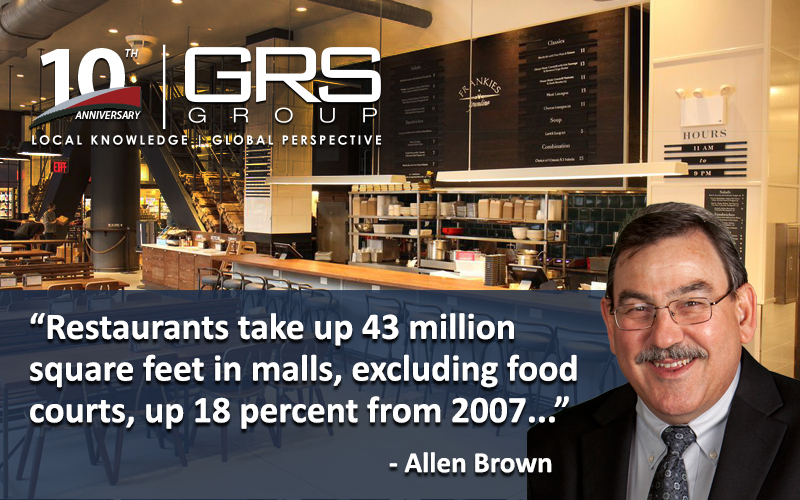Retail real estate landlords have their share of things to worry about right now, given the numerous waves of store closings that don’t seem to be ending any time soon.
But there is one area of the sector providing hopeful excitement. Restaurants and other food concepts continue to expand, and in many cases, are filling up areas of shopping centers where traditional retailers have called it quits, according to a CBRE report.
The food and beverage industry’s $1.7 trillion in sales last year was reportedly 24.2 percent of total retail, up from a pre-recession average of 22.7 percent. And since 2010 restaurants have experienced growth of 5.3 percent, while grocers are at four percent. Restaurants alone take up about 43 million square feet in malls, excluding food courts, up 18 percent from 2007.
CBRE predicts this growth trend to continue, as well as similar movement in the grocery sector, since e-commerce has not yet mastered full penetration of these business types.
When looking at restaurants versus grocery stores, the former became the leader in sales between the two as of 2016. Much of this is attributed to the rapid rise of fast-casual chains that offer higher quality meals than their fast-food counterparts at competitive prices. But grocers haven’t sat on their laurels. They’re offering high-margin prepared meals with increasing frequency, while Whole Foods has a restaurant in several of its stores, as do other major chains, such as Hy-Vee, with its Market Grill.
One of the several reasons that restaurants have increased in popularity has to do with an increase in single-occupant households. They accounted for 17 percent of the total in 1969 and are now up to 28 percent, and the figure reportedly goes up to 45 percent in large cities, CBRE says. Those living alone are more apt to go the convenience route, purchasing prepared meals and dining out. There are more dual-income households as well, meaning that thy can afford to spend more on the higher costs of eating out and other similar options.
Finally, the millennial generation is driving food and beverage’s future. Though they spend less per household than Generation X and the Baby Boomers before them, millennials spend a higher percentage of their incomes on these expenditures. It is predicted that, as they age and accumulate wealth, millennials will carry on these habits, and in turn, choose higher-cost options, setting them up to spend more on food and beverage than any prior generation.
If this serves as any gauge, it might mean that restaurants will continue to expand for years to come, helping to sustain retail real estate.
About GRS Group
GRS Group is a leading provider of commercial real estate (“CRE”) services worldwide. With offices across the United States, Europe, and affiliates around the globe, GRS Group provides local market knowledge with a global perspective for institutional real estate investors, occupiers and lenders worldwide. The GRS Group team has evaluated and advised on over $1 trillion in CRE transactions.
Through the company’s proprietary management process, Global Services Connection, GRS Group delivers an integrated suite of services including Financial Advisory, Transaction Management, Assessment and Title Insurance. We provide a single point of contact, capable of leveraging the GRS Group portfolio of companies and delivering customized solutions to assist our clients in achieving their investment goals.

